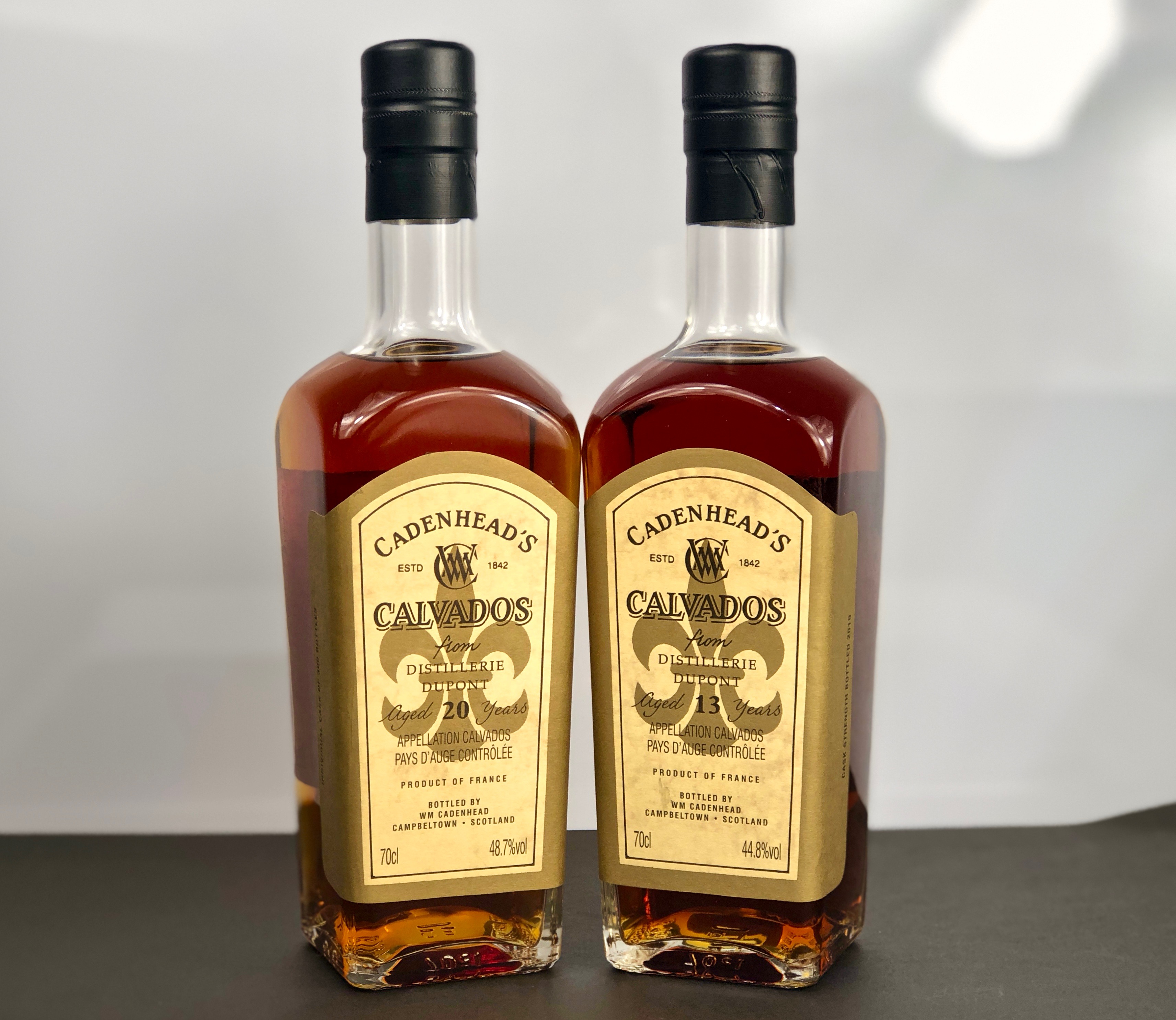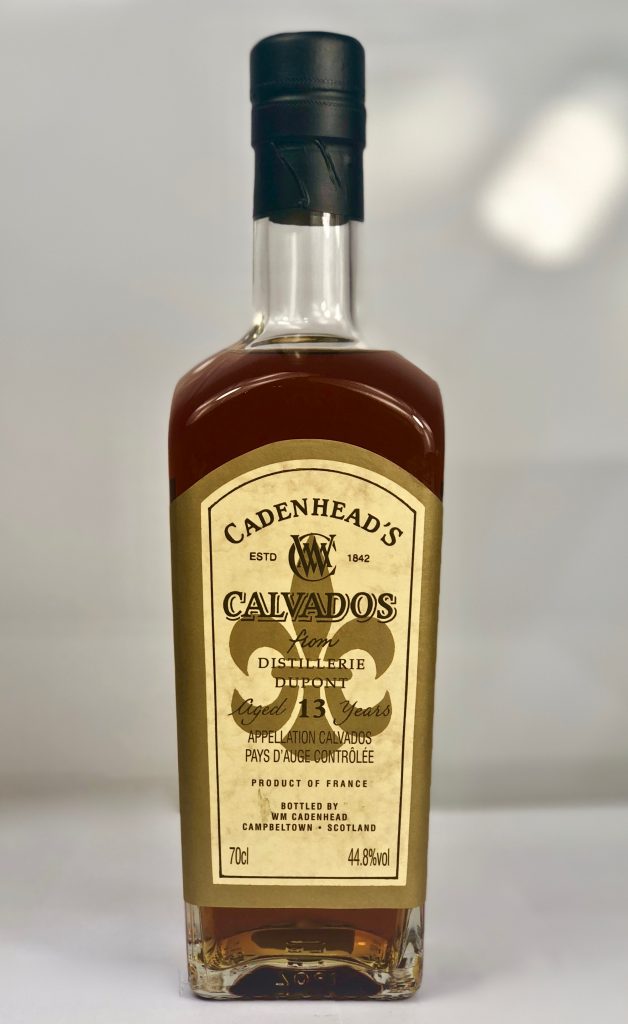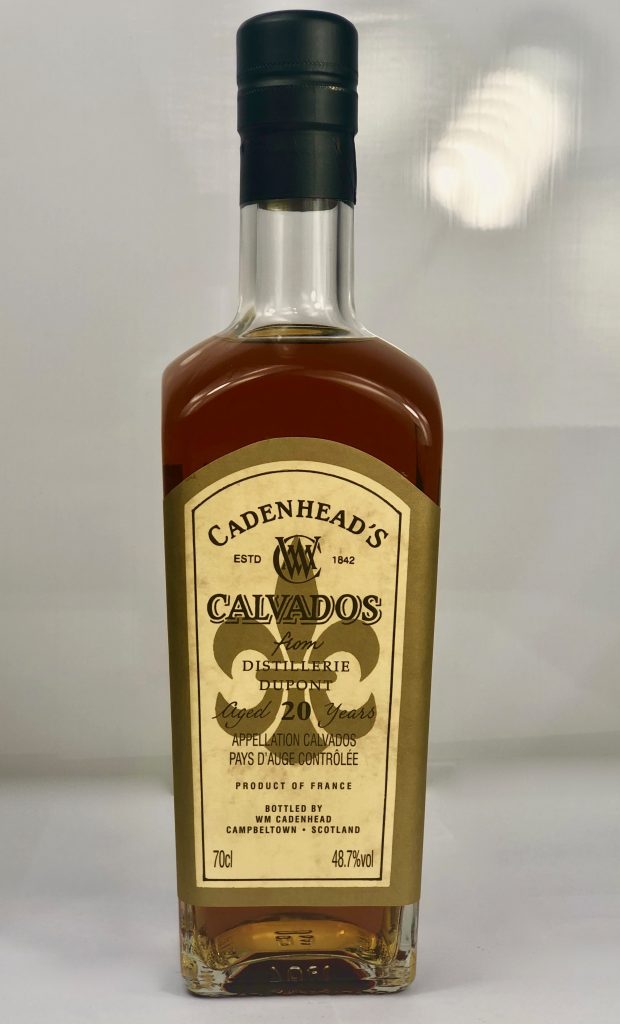
As most of you will now know, we have recently expanded the Cadenhead range. We have previously introduced our new cognac, armagnac and cachaca and now Mitch has been writing about calvados to provide a crash-course in the latest addition to the Cadenhead roster.
——
Calvados, one of our new additions to the Cadenhead repertoire, is a variety of brandy from France. Where cognac and armagnac are made from grapes, calvados is made instead from apples or occasionally pears. Calvados has to be produced in Normandy in northern France in order to be named calvados. The name “calvados” comes from the Calvados area in Normandy, famous for making the spirit.
History
The first known distillations in Normandy Province date back to 1553 and were carried out by Gilles Picot, Lord de Gouberville. It wasn’t until 53 years later in 1606 that the guild for cider distillation was created. After the French Revolution, the region of Calvados was created, but the spirit produced in the area was already commonly referred to as “calvados.” Calvados experienced a time of prosperity in the 19th Century due to an outbreak of phylloxera which decimated vineyards all over France, bringing the apple based spirit into favour. It wasn’t until 1942 that the Appellation d’Origine Contrôlée gave calvados it’s protected name.
Some details to remember; 25% of calvados is produced in the region of Calvados Pays d’Auge, the cider for this type of calvados needs to come from apples grown in Pays d’Auge and it must be double distilled. This is the group our new Calvados’ from Dupont and Drouin distilleries resides in.
The majority, 74%, of production is carried out in the wider calvados area and the apples used for this cider must be grown in Normandy.
1% of production is Calvados Domfrontais, the base for the spirit are apples and pears from the domfrontais region and it is only distilled once.
Around 6 million bottles of calvados (of all kinds) are produced every year with around 400 producers in the region. Comparing this to the 200 million bottles of cognac produced every year, it shows the massive difference production wise between these two spirits. The divide between cognac and calvados is not just due to the different ingredients used and the production methods.
One of the reasons for this divide is that King Louis XIV passed a law in the 18th century which prohibited the people of Normandy from exporting their calvados outside of the region as one of the ministers of the king was from the Cognac region in France himself. Due to these actions, cognac production and exports flourished while the production and recognition of calvados dropped significantly. This could explain how even today, calvados is still a much lesser known drink but hopefully that can change!
Production
Calvados is a much more diverse spirit compared to other brandies. Around 300 different named varieties of apples are specially grown and selected for the use of producing calvados. Producers are not restricted with how many different types of these apples can be used, which means the possibilities are practically endless for calvados, with some producers using dozens of varieties to make just one expression.
The specially selected fruits are first harvested, then fermented to make cider. The cider is then distilled into an eau de vie. This can either be a single continuous distillation or a double distillation. As mentioned above, the latter is required for the Calvados Pays d’Auge. The single distillation is done in a column still, while the double distillation is carried out in a traditional alembic pot still. It is believed that a double distillation produces a more complex spirit suitable for longer aging, while a single distillation gives a fresher spirit with more notes of apples. After the distillation, the eau de vie then requires at least 2 years of aging in oak casks and, once this is done, it can now be sold as calvados. The older the Calvados is the smoother the drink tends to become, with more notes of wood spice compared to the more lively fruitiness of the younger spirit.

New releases
With our new release of alternative spirits here at Cadenhead’s we have 4 great new Calvados’ from 2 brilliant producers. We have 2 from Domaine Dupont Calvados Distillery. A youthful, vibrant and fruity 13yo and a richer, more wood driven 20yo.
Production at Domaine Dupont dates back to 1887, when Jules Dupont arrived at La Vigannerie (the old name of the current estate) as a tenant farmer. He began producing cider and calvados, and through the sale of these he was able to purchase the estate in 1916. Flash forward over 100 years and the estate has remained in the Dupont family. The estate has also been extended to make the main focus the production of cider and calvados.
Just like us here at Cadenhead’s, the Domaine Dupont distillery has diligently followed a path of high quality. Whether this is through the manual sorting of apples at the estate (which is very rarely seen in the making of cider nowadays) to the bottling of cask strength calvados, quality is key at Domaine Dupont distillery. This is shown in the exceptional standard of the Calvados’ we have bottled.
We also have another 2 welcome additions from the Calvados Christian Drouin Pays d’Auge Distillery. Both of these releases are on the older side with a 1979 Vintage and a 1989 Vintage. Lots of complex spices, woody notes and a lovely rich mouthfeel apparent in both of these great older calvados’.
The Calvados Christian Drouin Pays d’Auge Distillery first started its production in 1960, when the founder Christian Drouin purchased lands in Normandy in the heart of d’Auge and began making calvados. The recent success and recognition of the brand is due to the son of Christian Drouin taking over ownership in 1989 and moving the operations to a larger estate soon after. The orchard of the distillery is very traditional which bodes well with us here at Cadenhead’s. Local varieties of apples are all grown and hand selected to ensure the highest quality for the calvados produced at Calvados Christian Drouin Pays d’Auge Distillery.

.
How to drink Calvados?
I have always said that I will never tell anyone how to drink their whisky, and this is the same with any spirit really. A lot of you will have been drinking a lot longer than I have, so I wouldn’t want to insult you – so to answer the question, drink it how you like!
Calvados tends to be served as an aperitif or digestif during long meals. It also goes well with deserts. Some will also serve calvados mixed with coffee at the end of a meal. It can also be used in the making of some lovely cocktails too, like the apple old fashioned – a nice autumnal twist on a classic!
While all of these are great suggestions, I’d really recommend pouring yourself a healthy measure and taking your time to enjoy, just like I’m about to do now. I hope you all enjoy these great new additions to our Cadenhead’s range as much as I do!
Till next time, slainte!
Mitch